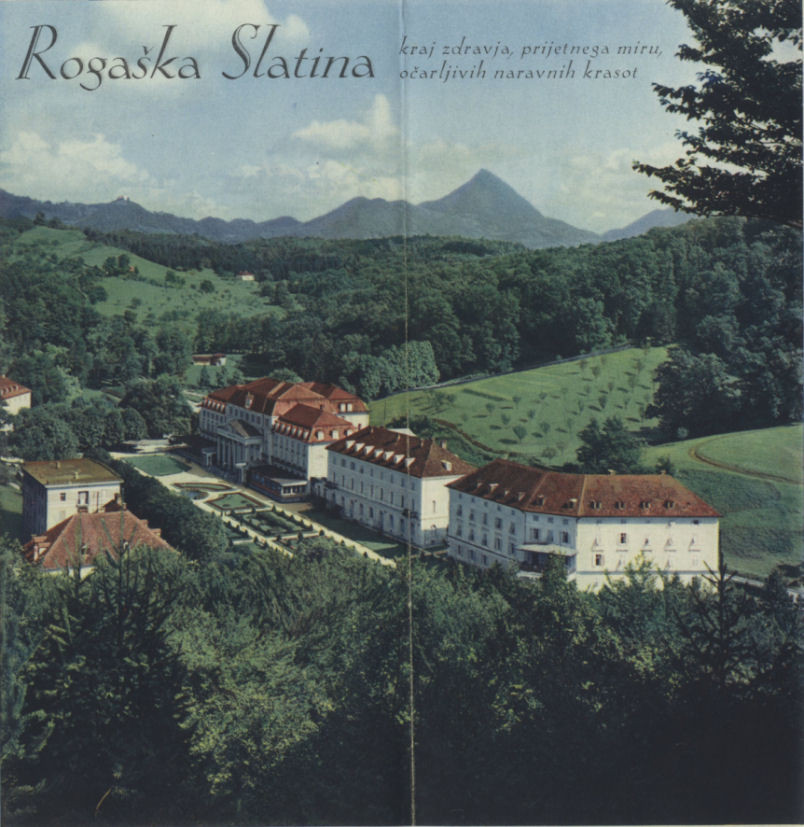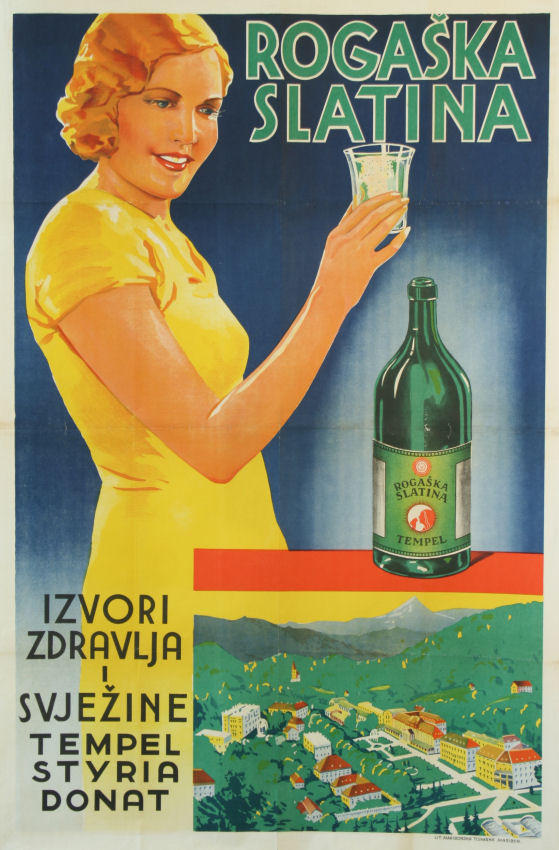Tourism and Tourist Propaganda in Slovenia During the Interwar Years

Rogaška Slatina is a place of health, pleasant peace, enchanting natural beauties. | Author Arhiv Republike Slovenije
Now that the height of the summer tourist season is slowly coming to an end and that the traffic in our small country at the foot of the Alps is finally moving again, it seems an appropriate time to take a look back to a time when Slovenia did not have its own piece of coastline, yet somehow still managed to attract foreign quests. They loved coming here for the unspoiled nature and to improve their health in places rich with thermal and mineral springs.
After the fall of the Dual Monarchy of Austria-Hungary in 1918 and following the period of the so-called “restructuring of the property”, the state managed to retain three tourist gems; Bled resort, Rogaška Slatina mineral spa, and Dobrna thermal spa. The 1920s were a time of regression and stagnation in terms of the visits to the then Slovenian tourist resorts since German speaking guests were reluctant to come here due to newly created state border. Still, the Slovenian interwar propaganda for our tourist destinations and spas continued to be aimed mostly at German tourists.
During the first period of the Kingdom of Serbs, Croats and Slovenians the issues about tourism, foreign visitors and the related propaganda were left to individual spas and tourist resorts, and were only partly dealt with by the institutions, developed for this particular purpose (Putnik – association for the traffic of passengers and tourists in the Kingdom of Serbs, Croats and Sloveniansor Yugoslavia, Section for the Promotion of Tourism at the Ministry of Trade and Industry, later called the Office for Tourism at the Department of Trade, Craft and Industry). It wasn’t until the mid-1930s that the initiative was set up for systematic and joint promotion of Slovenian tourist resorts at specialized tourism trade fairs abroad. In connection with this initiative, the promotion material published by the individual Slovenian tourist centres and submitted to the corresponding office has been preserved among the archival holdings of the Archives of RS, more specifically among the material in the fonds The Royal Ban’s Administration of the Drava Banovina, Department of Trade, Craft and Industry, Office for Tourism.
This month's archivalia is a piece of heritage that can be found among the holdings of archival institutions as well as among the holdings of museums and libraries. Presented here are the poster, printed brochures and several leaflets rich with photographs and illustrations (some of them created by well established artists) whose sole purpose was to attract visitors, travellers and health seekers.
Slovenian spas in the interwar period offered their guests ten or twenty day holiday packages during a season which opened on April 15 or in May and lasted till mid-October. Like today, the season was divided into preseason, which lasted from April 15 till the end of June, high season lasting from July 1 until the end of August, and off-peak season from September 1 until mid-October. Their doors were of course open also for major holidays, like Easter, Christmas and New Year.
In the mid-1930s, Rimske toplice spa offered their guests an all-inclusive health treatments should the guests decide to stay for a minimum of ten days. Included in such offer were accommodation, tasty and sufficient meals with bread included (breakfast, lunch, coffee for light meal, dinner), daily bath in the cabin and one medical check up, as well as spa and municipal fees.
Tourist posters of that time also invited the guests to relax and take in the unspoiled nature, to take a stroll among hundred-year-old woods, or to visit the surrounding vineyard covered hills. But even 80 years ago nature itself was not enough; one also had to consider the wishes, the habits and the needs of the guests. Thus the spas provided also lively entertainment and recreation (the guests were invited to visit the surrounding places of interest, to take hiking trips or trips by car or by train). Those who demanded more than that just a visit to the surrounding area, could make use of the tennis courts and the bowling alley as well as the indoor swimming pool which was sure to satisfy even the most demanding visitors and offer them the best of entertainment.
In conclusion let us just point out that this month's archivalia is a nice addition to the exhibition prepared by the State Archives in Rijeka. The exhibition takes us through some of the projects of swimming facilities from more than a hundred years ago.
Branko Radulovič


